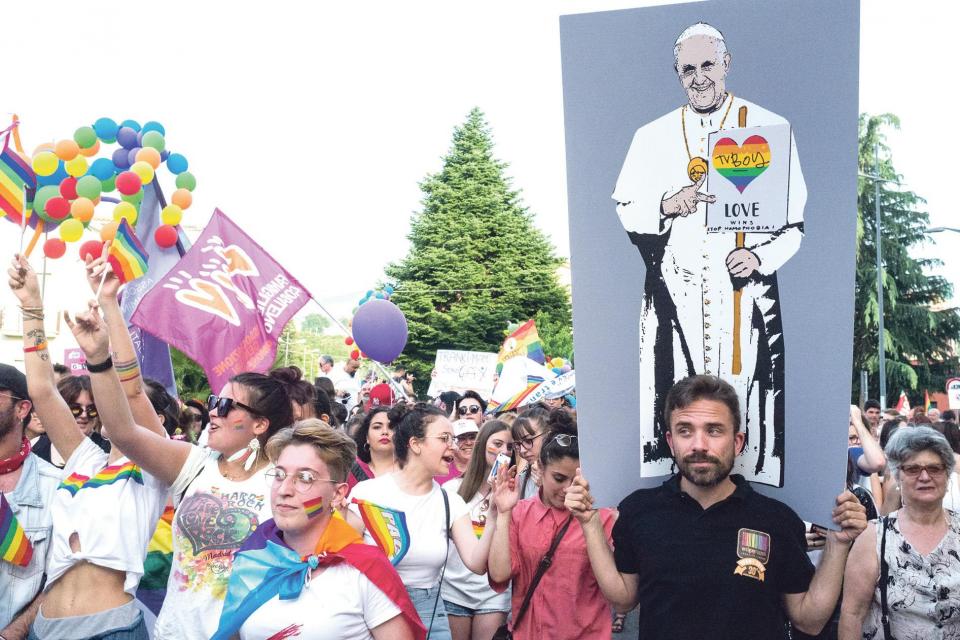Source:- timesofmalta.com
I usually assume that a Vatican document must have something right if it manages to send its conservative right wing into apoplexy, its left wing into handwringing concern, and the secular left into scandalised head-shaking. So it was with sunny optimism that I began to read the recent document on ‘gender theory’ in education, issued by the Congregation for Catholic Education.
Alas, I soon realised that the document was disliked by everyone because it’s so confused and woolly that it could mean many things. Given that it’s always prudent to suspect anything coming out of the Vatican, everyone went with their worst suspicions.
The social conservatives got stuck on the appeal to dialogue with ‘gender theory’, seeing it as a sop to ‘neo-pagan’ socialists. The left was aggrieved by the insistence that gender identity (roughly, the gender you subjectively identify with) is intrinsically linked to biological sexual identity.
Science still classifies sexual identity in terms of male and female, with anything in between being defined in terms of the two poles. So to assert that gender identity has to be based on sexual identity could seem like an argument that any other claimed gender is based on wishful thinking, not reality, and that sex/gender education policies, based on wishful thinking, are therefore likely to be harmful.
You can see why LGBTQ groups would be hostile to this suggestion. And you can see why claiming to wish to dialogue about this would appear, to social conservatives, to want to negotiate something that needs no negotiation.
The reason why the document is all over the place is that it tries to do several things at once, without distinguishing between them. It discusses both human nature in the abstract and how human nature can be distorted and frustrated in specific societies. It talks at once about descriptions of what actually takes place with what ought to be.
It’s never clear whether it’s talking about how gender identity actually is formed – a subject of interest to academic specialists – or what a Catholic curriculum ought to teach. Clearly, specialists can discuss things which are of no interest to teachers.
Specialists can be interested in debating whether a transsexual (pre- or post-operation) remains biologically of the sex at birth. They might even debate whether the operation should strictly speaking be called sex- or gender-reassignment surgery.
Teachers, however, are interested in how children in their care should be treated. Does it help their personal and moral development to be treated as belonging to one gender or another, or a third, irrespective of whether it’s a social fiction or not?
The Vatican document, in short, jumbles up those aspects of gender theory which are descriptions of actual cases, explanations of those cases, theories of what human gender actually is, and political philosophy based on these theories.
Where the document expresses doubt about claims, by some gender theorists, that human liberation calls for the dissolution of all gender differences, there are two ways to react. If you’re reading it with an eye on philosophy, you could raise your eyebrows and say – you disapprove of that? When you’re preaching the New Testament that says there’s no marriage in heaven and no male and female in Christ?
Or you could simply read it with the eye of a teacher, or catechist, and shrug, wondering what it all has to do with the price of eggs and helping your wards come to terms with the fact that one of their friends has two fathers, and another two mothers.
Strange to say, the reason that the document confuses so many different things is that it oversimplifies what ‘gender theory’ is. It treats it as a single doctrine, with some versions more radical than others.
Gender theory is a field of study, with rival ideas and arguments. Some are close to the Vatican congregation’s position that gender has some anchoring in sexual identity. At the other extreme end are theories that say our gender identity depends entirely on our subjective feelings.
What is common to all of them is the unexceptional idea that our gender identity doesn’t depend entirely on ourselves. It’s formed in our relation to others. In fact, gender is often assigned to consumer items (some cars are designed to look feminine, others masculine), food (meat and potatoes are masculine, rucola salad is not), and spaces (which is why a men’s club shower has a different texture and colours to that of a women’s).
It’s quite clear that if gender also depends on a culture’s symbolic structure, then some aspects of gender identity will have connotations that have nothing to do with sexual identity per se. They might even have the kinds of connotations of class and status that are based on exploitation – or, as the Church might call them, the structures of sin.
The document is a call for dialogue and further thinking on how a proper Catholic education might start off its wards onto the path of discovery – themselves and their friends. Let’s hope that the muddled beginning will lead to clearer ideas.
Not the clarity of the bigots, platitude merchants who oversimplify human nature. Nor the clarity of the social radicals, attitude merchants who oversimplify our ability to become what we are. But the clarity of those who understand that sexual and gender education is like learning a language, a lifelong experience based on recognising constraints as well as overcoming limitations.
